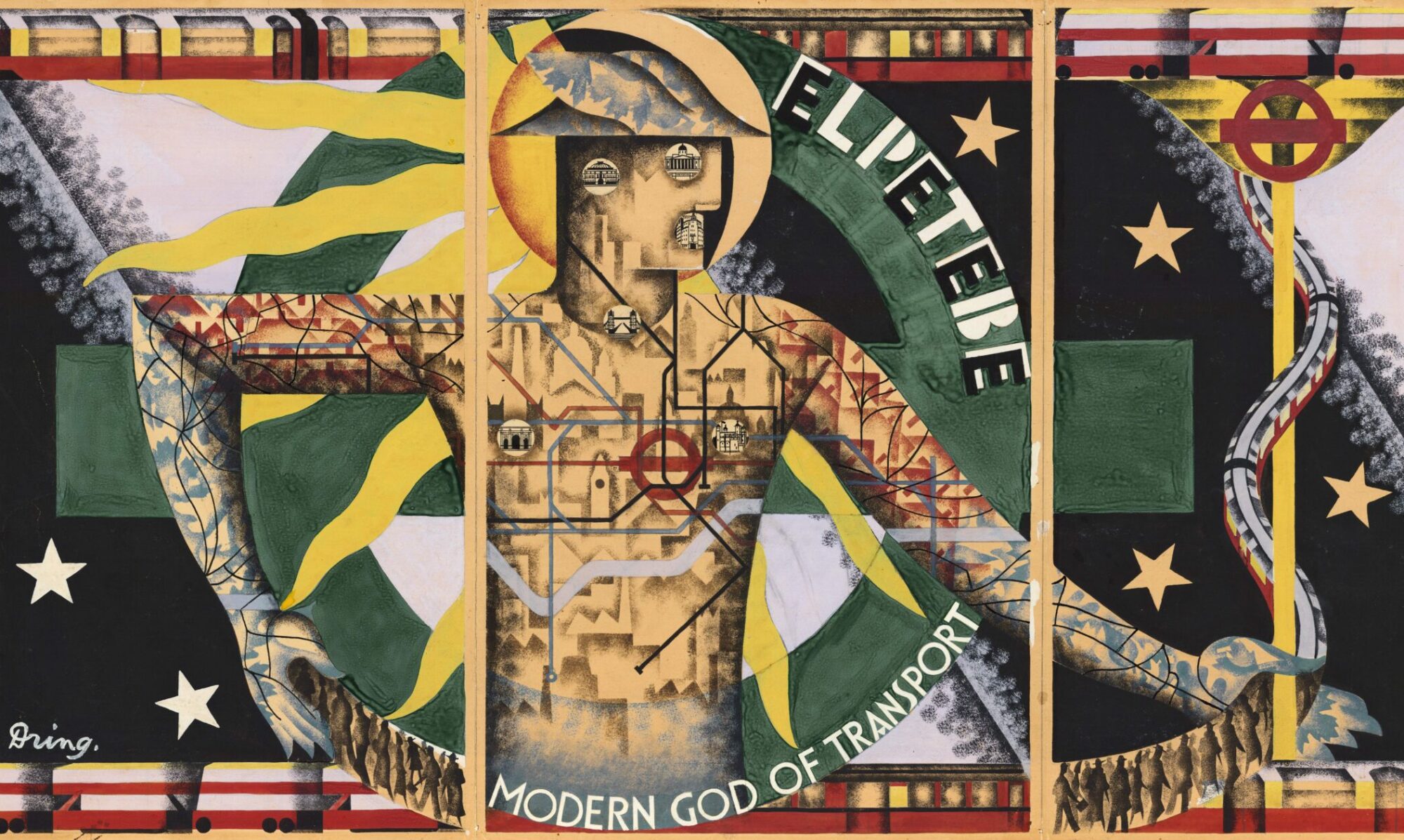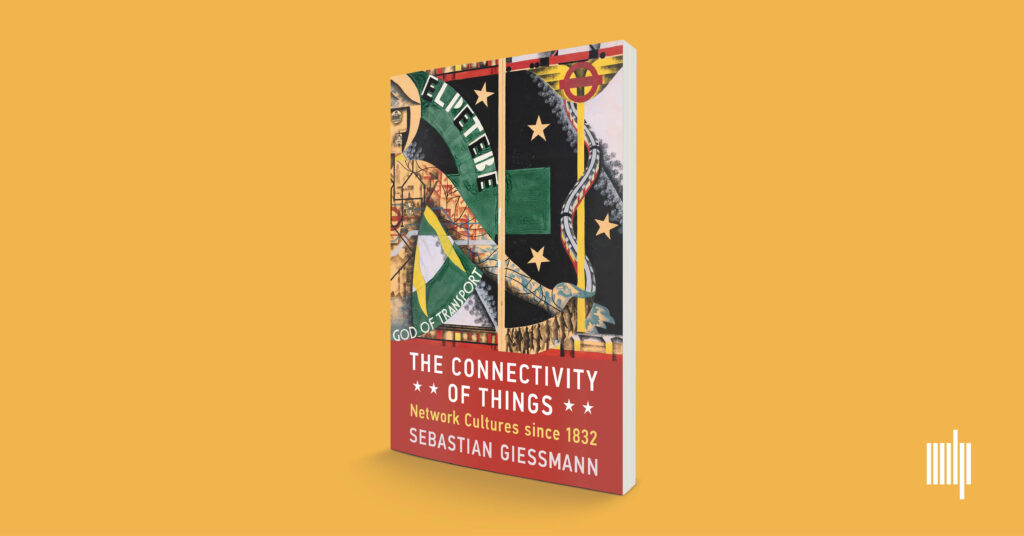Am 17. Oktober lese ich um 13 Uhr auf der Frankfurter Buchmesse aus meinem kommenden Kreditkarten-Buch. Moderiert von Wolfram Burckhardt, dem Leiter des famosen Kulturverlags Kadmos. Mit großem Dank an die Kurt-Wolff-Stiftung für ihre LESEINSEL der unabhängigen Verlage. Support your independent book publishers and sellers! Wer nicht vor Ort sein konnte, kann gerne die Aufzeichnung auf YouTube anschauen.
On The Connectivity of Things: Network Cultures since 1832
What is the truth about the network? And what might it tell us in our current situation? After five years of translation and fine-grained updating, Sebastian Giessmann’s seminal book on The Connectivity of Things: Network Cultures since 1832 finally came out in October 2024 with MIT Press. The full text is available in open access.
While the translated book’s historical narrative is deeply rooted in developments of 19th and 20th century infrastructural history, it is also a key work of German media theory. There’s much to discuss here for historians of technology, be it the notion of “cultural techniques,” the seemingly Western grounding of network practice and thought, and the in/visible work of networking in material cultures itself.
Connectivity is a book full of in-depth case studies that deserve a closer look, be it the relation between networks and colonial power in the case of French Saint-Simonianism, be it the early history of the telephone network, visual histories of network diagrams, the mobilities of the London Tube Map, Western and Eastern styles of logistics, and the unlikely inception of the ARPANET. It might be said that networks are a core cultural technique to allow for the migration of people, signs, and objects, which includes their disconnection. Connectivity of Things finally gives us a history that actor-network theory never dared to write itself.
We invite everyone at SHOT in Luxembourg to join the discussion, both in person and per hybrid participation. Our author-meets-critics session will combine key critical questions towards the book, and shall provide insights into the intricacies of such an (un-)timely and complex translation endeavor.
On The Connectivity of Things: Network Cultures since 1832
Author-meets-critics: Sebastian Giessmann (Siegen), Monika Dommann (Zurich), Cyrus Mody (Maastricht), Elizabeth Petrick (Rice), and Thomas Haigh (Wisconsin-Milwaukee)
Society for History of Technology Annual Meeting 2025
„Technologies of Migration – Migrating Technologies“
Esch-sur-Alzette, Luxembourg
Friday, October 10
12:55 PM – 2:10 PM

Eineindeutigkeit. Digitale Aktenform und blockchainbasierte Transaktion
Der Beitrag rekonstruiert das Entstehen einer digitalen Aktenform im 21. Jahrhundert, mit der die eindeutige Nachvollziehbarkeit von Finanztransaktionen und Rechtsakten garantiert werden soll. Hierzu werden Blockchain-basierte Infrastrukturen – Bitcoin, Ethereum und Worldcoin – anhand der sie fundierenden technischen Whitepaper rekonstruiert und kontextualisiert. Gemeinsam ist diesen Infrastrukturen, wie auch dem PDF-Format, eine Produktion von ›Eineindeutigkeit‹, die grundsätzlich immer bearbeitbaren Daten einen fixen Wert zuschreibt. Gegenüber den intransparenten Akten generativer KI im maschinellen Lernen, so die These, bieten Blockchain-Medien die Option einer digitalen Fixierung, mit der alle möglichen sozialen, juristischen und ökonomischen Praktiken registriert und identifiziert werden.
Im Open Access erschienen als: Eineindeutigkeit. Digitale Aktenform und blockchainbasierte Transaktion. In: Plener, Peter/Wolf, Burkhardt (Hg.): Akte/n. Stuttgart: Metzler, 2025, S. 153–166.
https://doi.org/10.1007/978-3-662-70242-0_9
Testing the Social Network
Blogging gets a bit harder throughout the start of the academic term. This is why I return to this series of image from The Connectivity of Things just now. Chapter 6 of the book tells a visual history of the network diagram. It follows the early history of graph theory in mathematics and chemistry. But the payoff here is a true crime history of sociology. While the name of Jacob Levy Moreno might sound familiar, the name of social psychologist Helen Hall Jennings is largely unknown even to scholars of social networks. Yet, it was Jennings who provided Moreno with a set of innovative methods to gather data on social relations. The sociometric test is what allowed for a visual formalization of a given network’s data. While Jennings still had a chapter of her own in the 1934 first edition of Moreno’s book Who Shall Survive, her work was hidden in a list of (numerous) references in the second edition of 1953. This is why I have started to reference both versions as written by Moreno and Jennings.
In the 1953 second edition, Moreno also made strong claims regarding “his” visual method of network visualization. A lot of the sociometric diagrams have been drawn by women though. Just consider an image like The Lady Bountiful, which was drawn by student assistant Pauline Lee in 1938. But in this case, Moreno’s copyright assertion for visualizing social networks has been more than mere rhetoric. His 1920s diagrams of stage movements in improvised theater (Das Stegreiftheater, 1924) can indeed be regarded as a crucial pathway towards visualizing dynamic social networks. But we should still be careful whom to give credit to when it comes to the methods of testing and visualizing social networks.
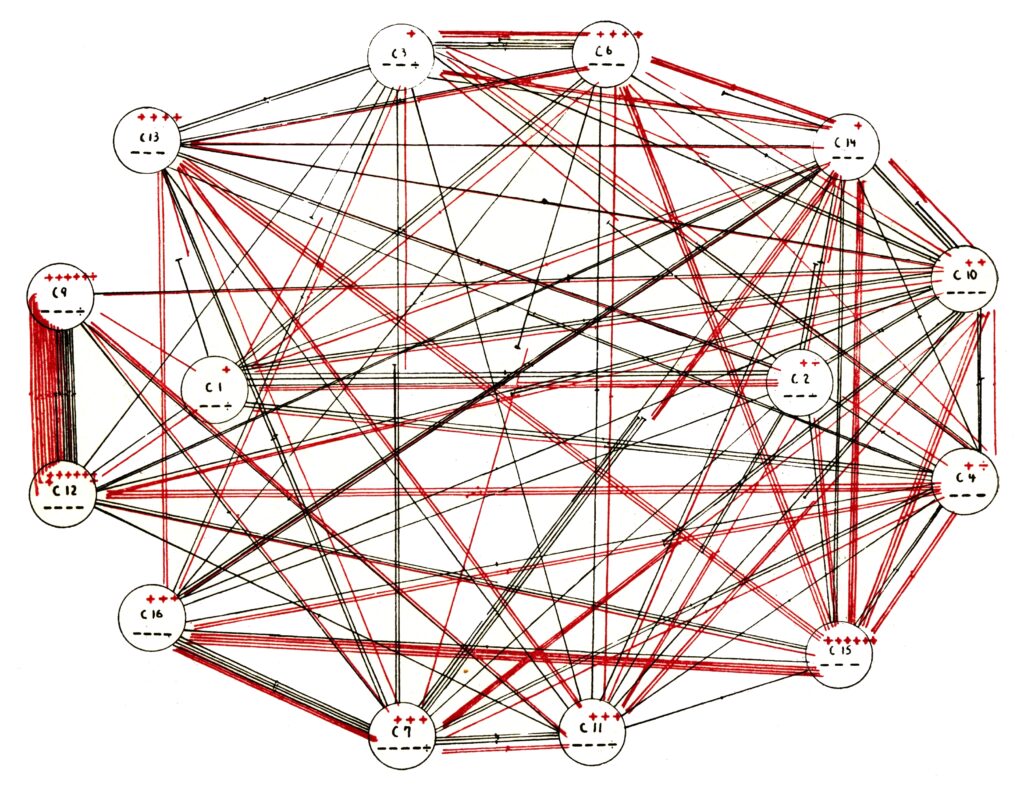
La science et la vie
There’s much to be said about this title page of the French journal La science et la vie. It comes with all the ambivalent connotations of gender, telephony, labor and automation history. We can still see a shadow of „la demoiselle du téléphone“ in the center of the image. Yet, the telephone girl or „Fräulein vom Amt“ has become a non-human switching machine in 1927. Experts of telephone infrastructure are going to notice the rotary selector and a stepping switch at the bottom of the image. Plus, the switching network in the center shows a line of alphabetic letters.
This circuit with letters points to an unusual feature of Paris telephone switchboards of the time. The first three letters of a telephone code indicated the telephone exchange. They were followed by four digits representing the person being called, which correspond here to the four dials of the “brain.” The seven-digit number could be entered using dials on which the twenty-five letters were printed.
Besides this technical dimension of social addressing, this title page also invokes older, reticular representations of networks. Blue and red lines remind us of the color conventions in anatomy and blood circulation, and thus provide a rather corporeal link for the telephone call of a man and a woman. More on telephone networking can be found in chapter 5 of „The Connectivity of Things: Network Cultures since 1832.“
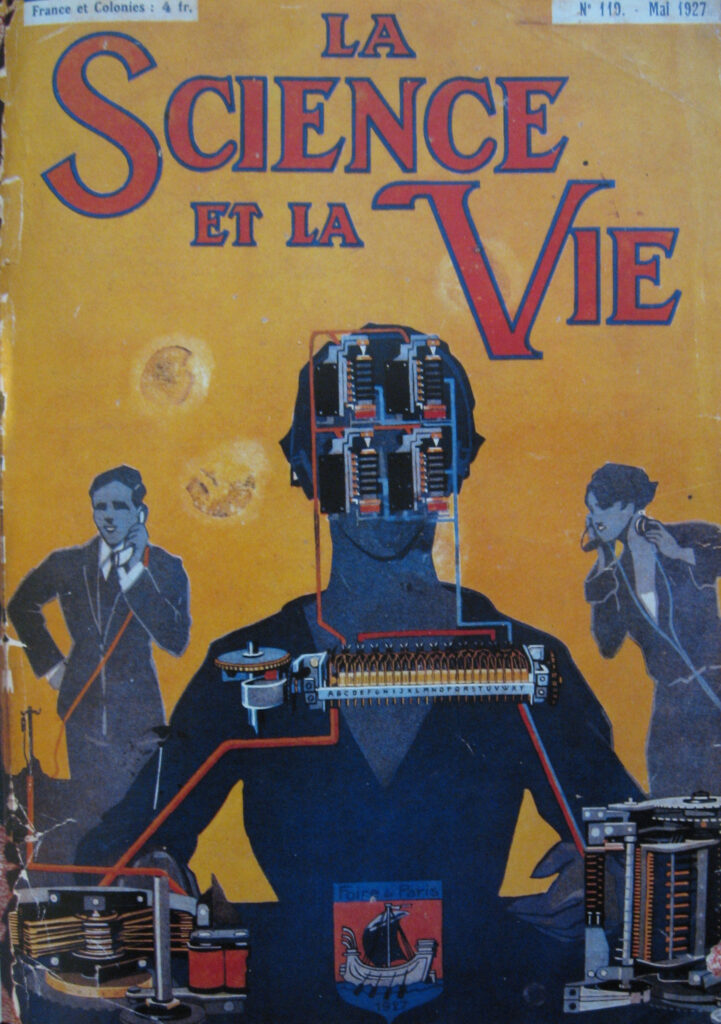
Charles Joseph Minard’s Statistical map of European railroad traffic
So I continue with another image that represents a significant entry in my network history The Connectivity of Things: Network Cultures since 1832. The book came out on October 15, by the way. Chapter 4 follows the twisted paths of Saint Simonianism. Yet, this week’s image is not as ambivalent as the rest of the chapter which deals with early socialism’s colonial ambitions. Polytechnicien Charles Joseph Minard’s 1862 statistical map of European railroad traffic rather underscores the Saint-Simonian ambitions for a mobilized industrial Europe. Minard’s other statistical maps and diagrams have become a classic in the history of visualizing information. But this image primarily expresses the ambitions of Saint-Simonianism to create a vibrating infrastructural network for the good of society.
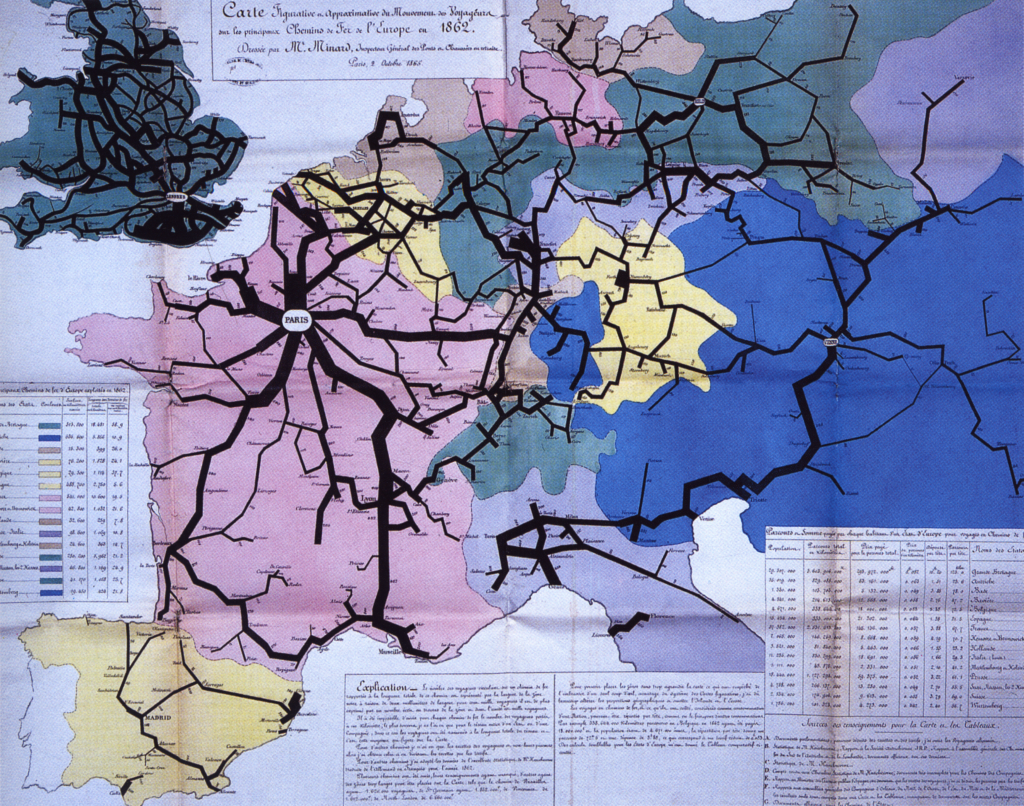
Prosper Enfantin: Colonisation de l’Algérie
This week’s image from The Connectivity of Things is a colonialist map. It was published as a fold-out part of Prosper Enfantin’s 1843 book Colonisation de l’Algérie. In this treatise, the Saint-Simonian cult leader Enfantin was upfront about the strategic placement of settlements and settlers in Algeria. While the early socialist movement of Saint-Simonians movement had started with utopian dreams of a new networked unity of orient and occident in the 1830s, this map deliberately drew a reséau de soumission –– a network of colonial submission and police power.
Chapter 3 of the book is focused on theory and heuristics of writing network history in „An Archive of Networking.“ Yet, this map features prominently in chapter 4 of the book. It is called „Channels: The Politics of Networking around 1850,“ and it deals with the ambivalent history of network ideology and practice in early socialism. There’s not just a breathtaking colonial history to be told here –– which includes the Suez Canal –– but also one of early feminism, romanticism and social engineering. I’ll come back to the Saint-Simoniennes and Saint-Simoniens next week.
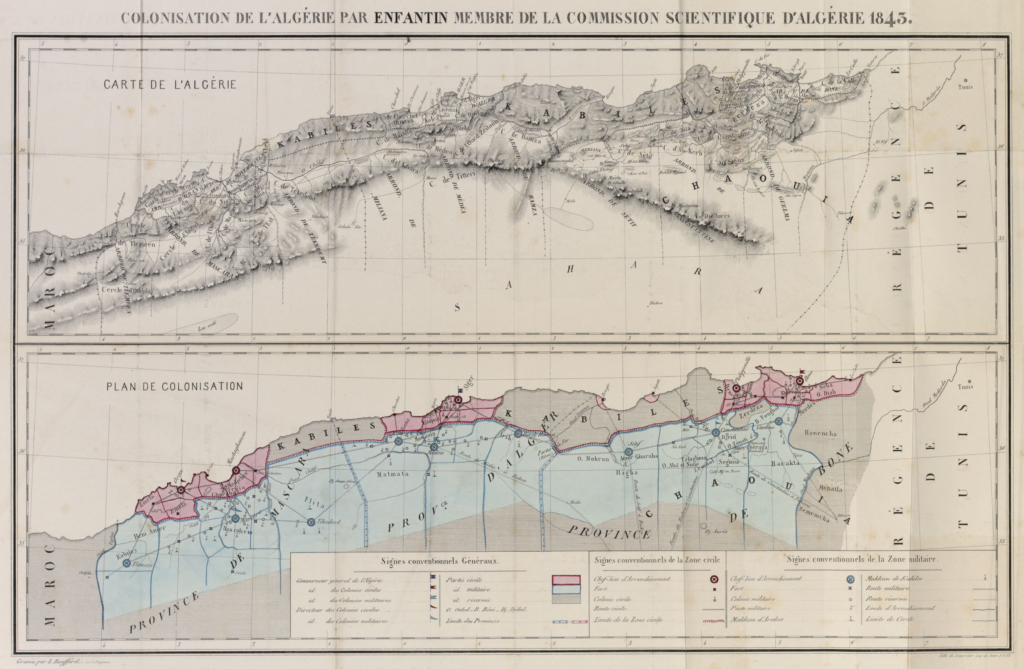
The Stele of Vultures
Chapter 2 of The Connectivity of Things: Network Cultures since 1832 is called „Six strata of network history: Genealogy of a cultural technique“. Actually, this one has been written almost exclusively from scratch for the English version of the book. It carves out two main themes of the book. Firstly, this chapter is about research on cultural techniques, and what this means for an Anglophone audience. And secondly, I am telling the longue durée story of nets and networks in a very condensed form.
This week’s image resonates with that genealogy which uncovers six strata of network history: material culture, mythology and religion, reticular nets, infrastructural nets, social networks, and network science. (Connectionist artificial intelligence might develop into a seventh stratum, but this remains to be seen.) The so-called „Stele of Vultures“ resides in today’s Louvre. In the spatial logic of the Paris museum’s collection it represents the beginning of cultural history. In the Louvre you’ll not just find the fragments of a net of power that holds and punishes the enemies of the city-state of Lagash. The stele is surrounded by a multitude of smaller objects of Sumerian everyday culture. Nonetheless, it remains a stunning testimony of ancient civilization’s symbolization of the net as a network of binding, holding, and ruling power.
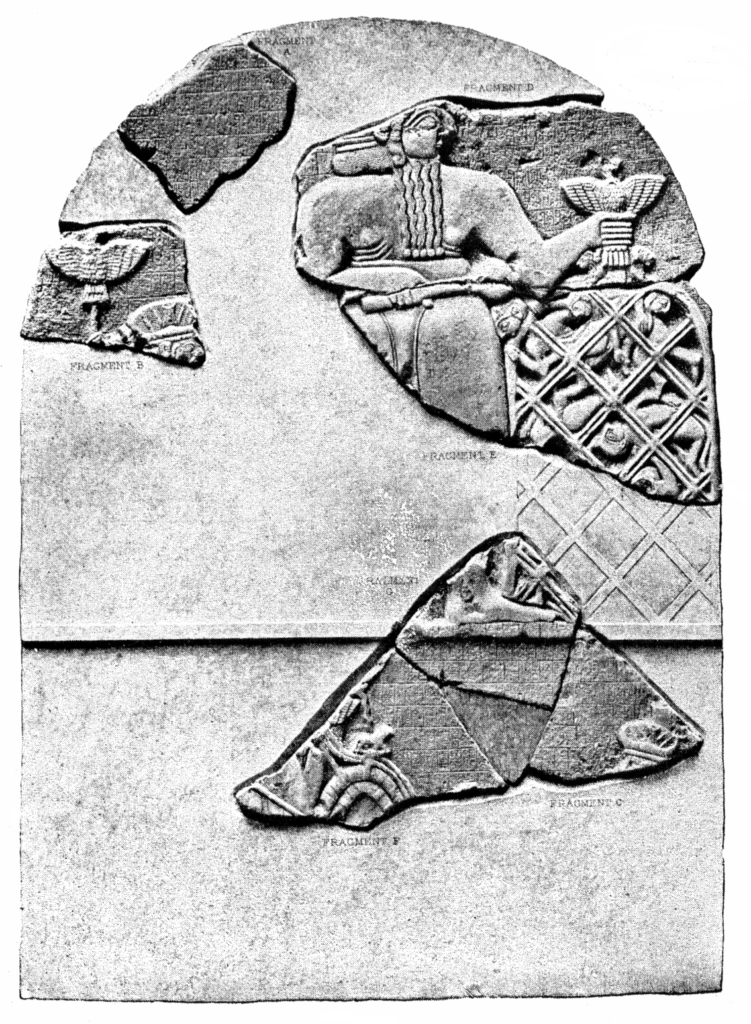
Paolo Veronese: L’industria
Since The Connectivity of Things: Network Cultures since 1832 is coming out on October 15 I might as well blog about some of the book’s visual elements. The book has eleven chapters, so this will be a weekly series of eleven images that convey and carry Connectivity’s narrative. These will be brief entries, since the images themselves are key protagonists of my network history. I do hope that they inspire deeper reading.
Let’s start with Paolo Veronese and his workshop who finished their allegory of „industry“ in 1577. This oil painting makes its appearance in chapter 1, which is called „Getting caught up“. It has already served as a frontispiece for the German original Die Verbundenheit der Dinge. From my point of view, it is the first heterogeneous network that represents and transcends the material net as web between nature and culture. Veronese’s network evokes a multitude of meanings, some of which I address in the first chapter. Up until today it is one of the most stunning artworks in the Palazzo Ducale of Venice.
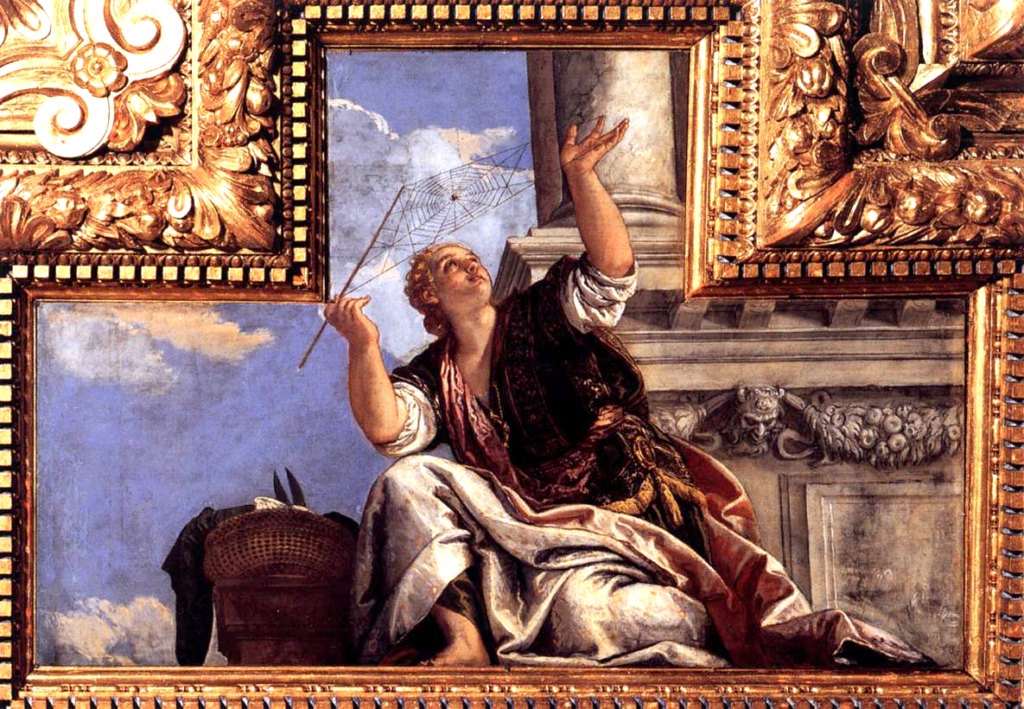
The Connectivity of Things: Network Cultures since 1832
Nets hold, connect, and catch. They ensnare, bind, and entangle. Our social networks owe their name to a conceivably strange and ambivalent object. But how did the net get into the network? And how can it reasonably represent the connectedness of people, things, institutions, signs, infrastructures, and even nature? The Connectivity of Things by Sebastian Giessmann, the first media history that addresses the overwhelming diversity of networks, attempts to answer all these questions and more.
Reconstructing the decisive moments in which networking turned into a veritable cultural technique, Giessmann takes readers below the street to the Parisian sewers and to the Suez Canal, into the telephone exchanges of Northeast America, and on to the London Underground. His brilliant history explains why social networks were discovered late, how the rapid rise of mathematical network theory was able to take place, how improbable the invention of the internet was, and even what diagrams and conspiracy theories have to do with it all. A primer on networking as a cultural technique, this translated German classic explains everything one ever could wish to know about networks.
A media history of the material and infrastructural features of networking practices, a German classic translated for the first time into English.
The MIT Press, Infrastructures Series
October 15, 2024
444 pp., 6 x 9 in, 82 b&w illus.
Open Access version: https://doi.org/10.7551/mitpress/12547.001.0001
„The Connectivity of Things: Network Cultures since 1832“ weiterlesen
